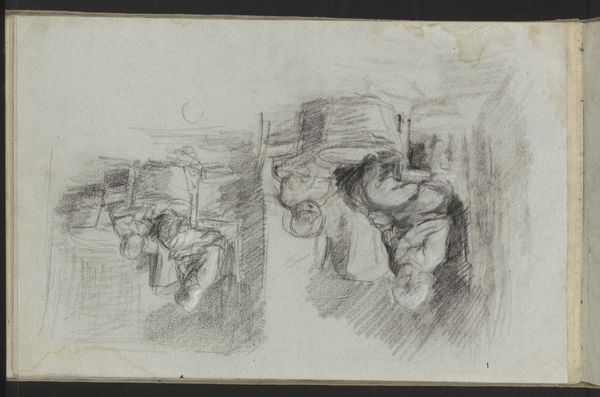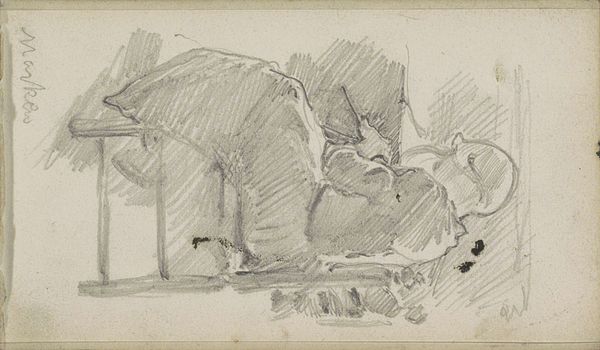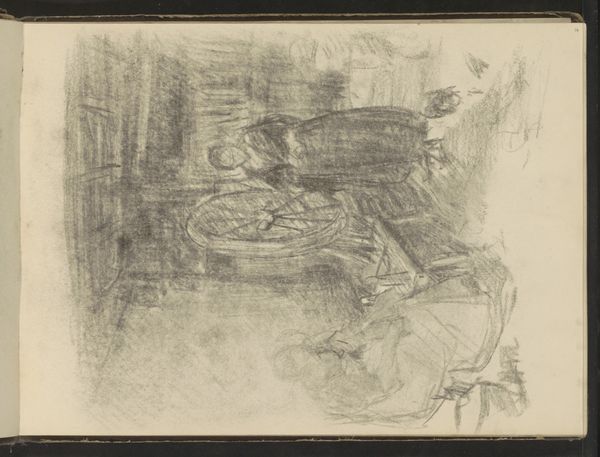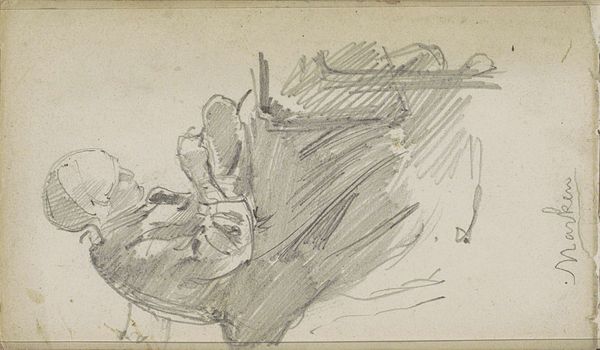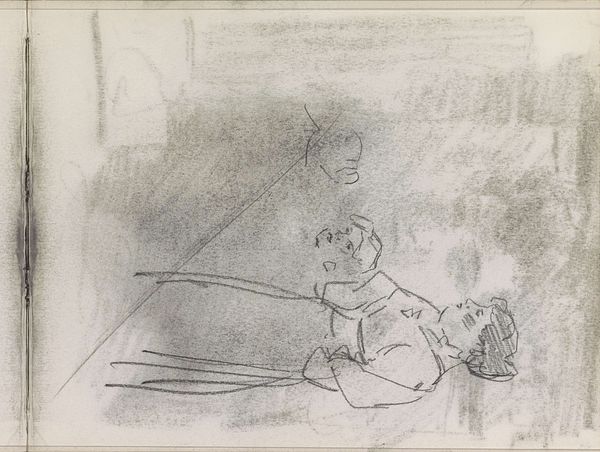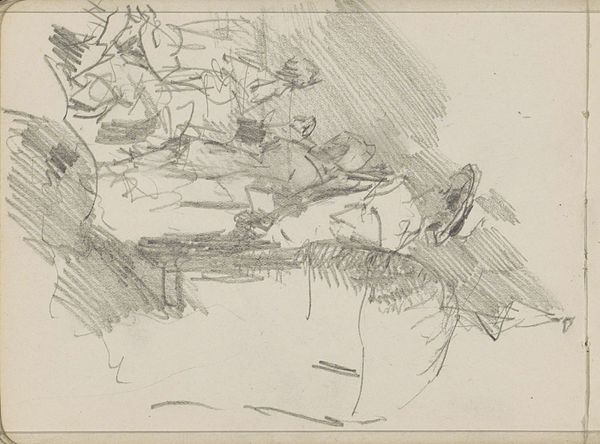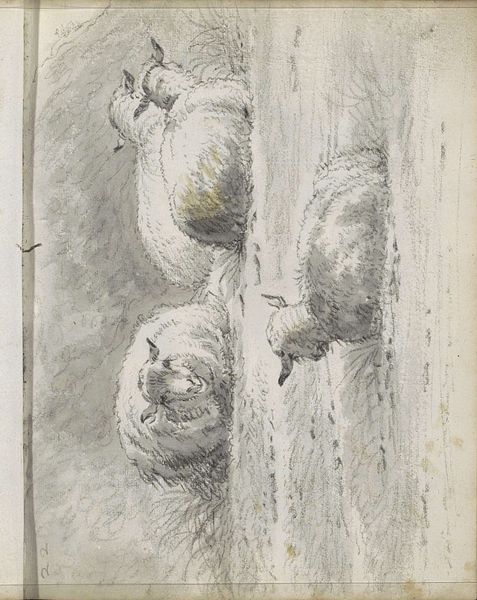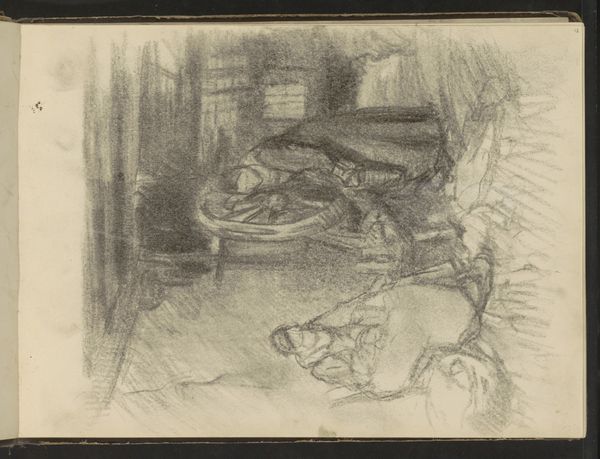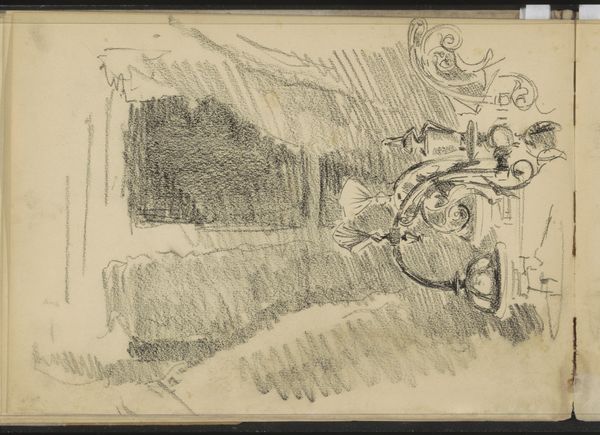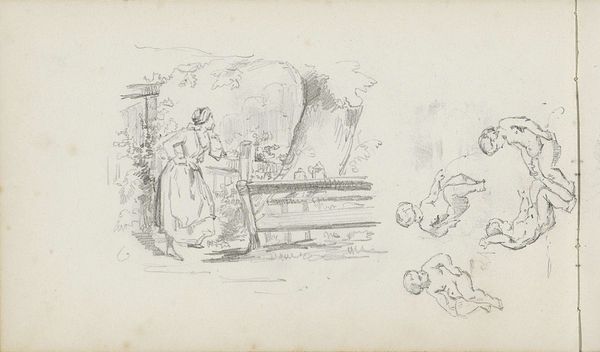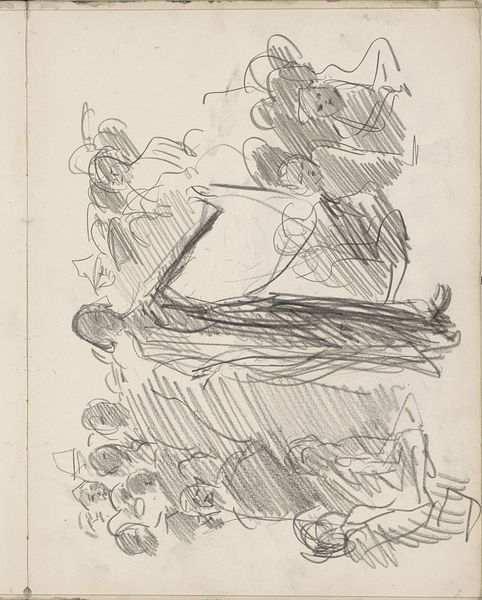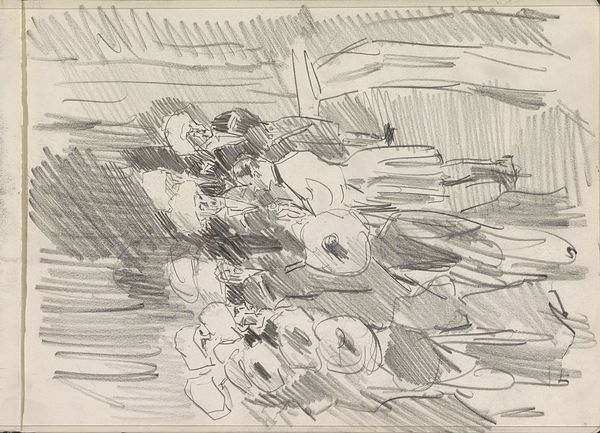
drawing, pencil
#
drawing
#
dutch-golden-age
#
pencil sketch
#
pencil
#
realism
Copyright: Rijks Museum: Open Domain
Editor: Here we have Maria Vos’s "Stillevens met etenswaren op een schaal," a pencil drawing from around 1863-1864. It’s interesting to see these quick studies of still life arrangements. What compositional elements stand out to you? Curator: The work displays a fascinating exploration of form through the medium of pencil. The artist’s engagement with value and line is quite compelling, wouldn't you agree? Note how the tonal gradations shape the depicted objects, providing them with a subtle sense of three-dimensionality. Editor: Yes, the use of shading does create depth. But it's a bit ambiguous. I’m not entirely sure what all of the objects are. Curator: Precisely. Consider that ambiguity as a deliberate manipulation of form, disrupting any clear representational reading. The lack of precise detail invites us to focus instead on the rhythmic interplay between light and shadow, the structural integrity of the composition itself. Editor: I see. So, it's less about what’s depicted and more about the formal relationships within the work? Curator: Exactly. We observe not merely a still life but an arrangement of shapes, tones, and textures. This prioritisation invites the viewer to decipher the underlying order, independent of referential content. Do you find that your appreciation of the work shifts when approached this way? Editor: It does. I was trying too hard to identify each item. Looking at it purely as shapes and textures makes it feel more modern, almost abstract. Curator: An insightful observation. Editor: I came in expecting something more traditional, but seeing the interplay of form and texture is truly eye-opening. Curator: It underscores the rich possibilities that art offers when we privilege internal elements and arrangement over the demands of subject matter and objective duplication.
Comments
No comments
Be the first to comment and join the conversation on the ultimate creative platform.

